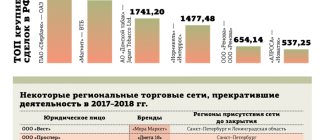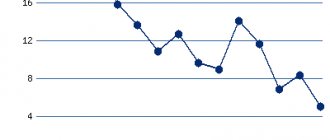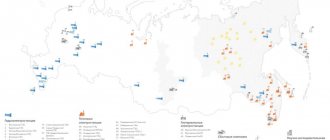Speech at the conference of young scientists “Income creation, accumulation of national wealth, emerging markets and new world finance”
The report examines the main trends of the Russian foreign exchange market at the present stage of its development. Key projects of the Exchange's foreign exchange market and their results are offered for analysis, including large-scale projects for the broadcast of ruble liquidity and the development of the Integrated Foreign Exchange Market in the space of the EAEU countries, stimulating the growth of international relations.
National goals and national projects
The authors highlight a number of features of the 2021 Presidential Decree and note that the developers learned from previous experience:
- identifying human capital and infrastructure as key sectors. Digitalization stands out in particular, but, in fact, it concentrates both of these groups of problems;
- the intended goals and priorities are adequate to modern technological, economic and social challenges. Moreover, similar tasks face all developed and leading developing countries, as can be seen from the analysis of the programs of their ruling parties;
- As noted above, in the 2021 Decree the emphasis has been shifted to solving supply-side problems, i.e. investment-led economic growth. In other words, the driver of project implementation is not costs (wage growth), as in 2012–2017, but investments;
- financing of the planned projects is expected almost exclusively from the federal budget, i.e. without additional burden on regional budgets. The issue of the volume and sources of funding was decided at the stage of developing federal documents and was taken into account in the federal budget. Of the 25.7 trillion rubles allocated for the implementation of national projects, regional budgets account for 4.9 trillion rubles;
- Regions must sign agreements with the federal government containing commitments to achieve national goals as a result of the use of appropriate budget funds.
At the same time, with the beginning of the development and implementation of specific federal projects, problems and contradictions emerged that require serious discussion and clarification.
Migration
In recent years, the consequences of the economic crisis and the sharp change in migration legislation in 2015 in the field of temporary migration have only been partially overcome. The initial growth of migration from the EAEU countries has practically stopped, the only exception being Kyrgyzstan - the number of migrants from this country continues to grow, and, apparently, the growth potential has not yet been exhausted. Temporary migration from Azerbaijan has resumed. Migration from Tajikistan and Uzbekistan is growing, but pre-crisis values have not yet been reached (compared to 2013 - a lag of 6 and 28%, respectively). There continues to be a significant reduction in temporary migration from Moldova, and in the last three years from Ukraine.
Russia has not begun to attract more migrants from developed Western countries; their number continues to remain minimal compared to pre-crisis values. Minor fluctuations in 2018 do not change the general trend in any way (Table 3). Commercial and business travel increased slightly compared to 2021, but labor migration, as well as business and private travel, continued to decline. In general, a comparison with pre-crisis indicators shows an average drop of 2.5 times, and for individual countries (Spain, USA, UK) - 5–7 times.
Demographic situation
Currently, Russia is on the path of transition to a difficult demographic stage, which is characterized by new demographic risks and the natural decline of the country's population. Data for 2021 confirms this fact. A significant decline in the number of births continues, associated with a small cohort of women of reproductive age. High mortality rates are another component responsible for the natural decline in the country's population.
According to preliminary data from Rosstat, the life expectancy of the population was 72.84 years (men - 67.66 years, women - 77.87 years), the total fertility rate is 1.597 per woman of reproductive age.
In 2021, the natural population decline in Russia amounted to 218.4 thousand people, which exceeds the same figure for 2021 by 62.5% (by 84 thousand people). The overall fertility rate continues to decline. In 2021 it was 10.9‰. This is lower than the same indicator for 2021 (11.5‰) by 5.2%. The overall mortality rate of the population in 2021 remained at the level of 2021. In the structure of causes of death of the population of Russia in 2021, the share of diseases of the circulatory system continues to prevail (46.3%), followed by neoplasms (15.9%) , other classes of causes (11.7%), external causes (7.2%), diseases of the nervous system (6.2%), diseases of the digestive system (5.1%), diseases of the respiratory system (3.3%), diseases of the endocrine system, nutritional disorders and metabolic disorders (2.3%), infectious and parasitic diseases (1.7%).
Institute of Economic Policy named after E.T. Gaidar: https://www.iep.ru/files/text/trends/2018/2018.pdf?fbclid=IwAR1HJOV0hqPkqehUd4UcmSOgCZzO3YrG2HDV3VqNnESRps5cu1TzwmMqbIk
Should we be afraid of the depreciation of the ruble?
The first conversations about devaluation began after Russia annexed Crimea and the sanctions imposed against it. In addition, citizens are noticeably confused by the issue of new banknotes, since the money supply has increased by 11.5% over the past 2 years. In addition, although the country is now in a relatively stable state, it needs to reduce its own expenses in order to thereby obtain a certain reserve to prevent a possible default.
The stability of the Russian currency is also influenced by foreign policy. The situation in Syria and Ukraine will continue to weaken Russia economically, unless Europe decides to lift the sanctions it has adopted.
Some optimistic analysts say that in 2021 the dollar will be able to fall to an acceptable level of 30-40 rubles. However, most experts agree that this figure is unlikely to fall below 60 rubles per dollar.
As for the devaluation of the domestic currency, it is most likely not terrible for the Russian economy for the simple reason that the government is now actively trying to reduce risks and increase additional income. It is also worth considering the fact that Russia does not have so many debts to be in such a deplorable state.
Consequences and prospects of restricting access to the Forex market
Sanctions and any restrictions will primarily affect ordinary traders who are looking for optimal trading conditions and a variety of trading instruments. Foreign companies have good prospects to continue providing their services to Russian clients in the future.
In 2021, the countries of the Customs Union plan to unify economic legislation. To provide services in the territory of the Customs Union countries, it will be necessary to obtain a license in one of the countries belonging to the union. At the moment, the most loyal and favorable conditions for obtaining a license have been created in the Republic of Belarus.
This means that all blocked brokers will return to Russian territory again. It sounds fantastic, but a similar system has come into practice in the European Union.
European brokers obtain a license in one of the EU countries (usually Cyprus) and legally provide their services in other countries. Modern trends in the development of the financial system require the development of more reliable control mechanisms by regulatory authorities.
Retail
Retail trade turnover in 2021 amounted to RUB 31.5 trillion. in monetary terms. We can expect that in 2021 retail trade turnover will approach or even exceed pre-crisis levels. At the beginning of 2021 (January), the value of retail trade turnover in monetary terms amounted to 2.5 trillion rubles, or in comparable prices compared to January of the previous year, 101.6%. The growth of food products, beverages and tobacco products, which was at 100% in September 2018, amounted to 102.1% by January 2021. The growth of non-food products in January, although remaining positive, decreased to 1.2%.
The consumer price index in February 2021 compared to the corresponding period of the previous year is 105%, including 105.5% for food products, 104.5% for non-food products and 105% for services. Thus, in annual terms, prices increased for all components of retail turnover. In the category of non-food products, prices for tobacco products (9.9%) and gasoline (9.6%) increased the most in annual terms. Also, prices for building materials, medicines, electrical goods and other household appliances, detergents and cleaning products, knitwear, shoes, clothing and underwear, and fabrics increased (by 1.8–5.8%). Prices decreased only for television and radio products (-1.1%).
Tensions between the United States and China are tense
We can say that it is not the first day that one can observe tension in relations between the two states of the United States and China. Moreover, as a result of Trump’s harsh and critical statements during the election campaign towards the People’s Republic of China, relations worsened. The statement addressed resentment regarding the taxation of US imports of goods, at which time the US allowed products of the People's Republic of China to be supplied to the American market without taxation.
At the end of 2021, Trump expressed displeasure regarding the reduction of the Chinese yuan without an agreement with the United States.
Therefore, it would be quite logical to expect a deterioration in relations between the United States of America and the People's Republic of China from this year. Especially if a decision is made regarding the imposition of duties on imported goods from China.
This situation may not benefit the dollar exchange rate relative to other currencies. But, at the same time, it is possible that the current president will take measures to improve the US economy, and therefore strengthen the position of the dollar.
It should be noted that not so long ago, it was decided that the United States would extend sanctions against the DPRK. Most of the House members voted for this bill. Once the law is passed, ships flying North Korean flags will not be able to enter US seaports.











